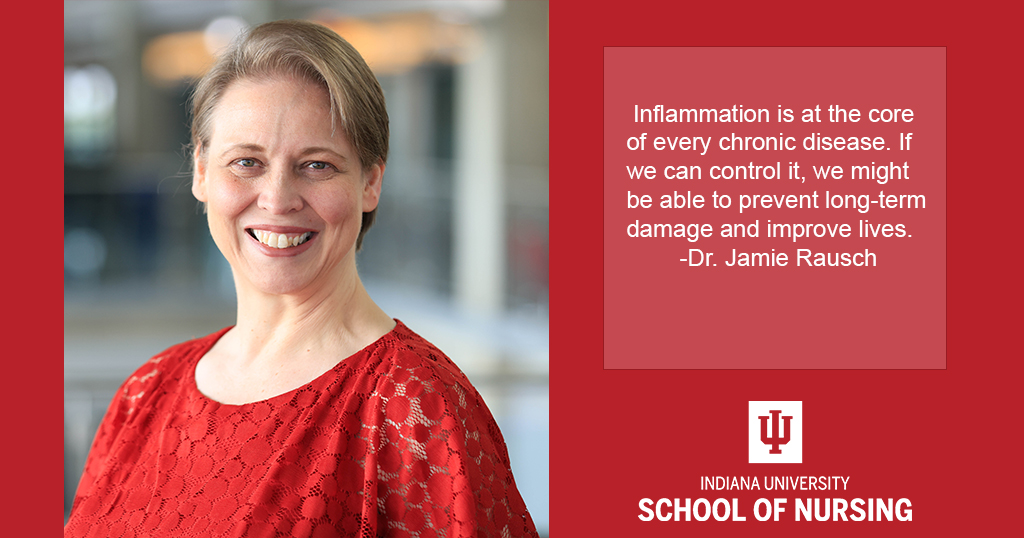Dr. Jamie Ann Rausch, assistant professor at the IU School of Nursing in Fort Wayne, has dedicated her research to understanding the biological links between systemic inflammation and chronic diseases, focusing on the role of adipokines, leptin, and adiponectin—hormones that regulate inflammation. Her ultimate goal is to uncover how these factors influence symptoms and risks associated with chronic diseases, particularly heart failure, one of the most widespread and severe cardiovascular conditions affecting over 6.2 million Americans.
During her nursing career, Dr. Rausch maintained a list of 17 topics she was curious to explore, and remarkably, every single one involved an inflammatory component. When she began her PhD journey, she chose to dive into one key area of that list: inflammation’s role in peripheral vasculature and wound healing. As a Robert Wood Johnson Foundation Future of Nursing Scholar, she was paired with Dr. Jodi McDaniel at Ohio State University, who studies inflammation in chronic venous leg ulcers. Together, they began exploring the intricate relationship between leptin and adiponectin in systemic inflammation.
“Most people think of fat tissue as merely storage for excess energy,” Dr. Rausch explains. “But now we know it’s the largest endocrine organ in the human body, releasing more than 100 different hormones that influence processes all over the body.”
Her current study, still in its pilot phase, aims to analyze leptin, adiponectin, and the leptin-to-adiponectin ratio (LAR) as potential early indicators of inflammation in heart failure patients. Unlike many studies that investigate leptin and adiponectin separately, Dr. Rausch is focusing on the ratio between the two hormones, which she believes is a more accurate reflection of overall inflammation status. Leptin, often known as the "hunger hormone," and adiponectin play both pro- and anti-inflammatory roles; leptin tends to have more pro-inflammatory effects while adiponectin primarily has anti-inflammatory effects. By studying them together through the LAR, she hopes to gain a clearer understanding of their collective impact on inflammation and heart failure progression.
"By the time traditional inflammation markers like CRP or IL-6 show changes, damage may already be done," Dr. Rausch notes. "But with the leptin-to-adiponectin ratio, we might catch inflammation earlier and intervene before irreversible tissue and organ damage occurs."
In collaboration with the Regenstrief Institute and the Indiana Clinical and Translational Sciences Institute (CTSI), her team is preparing to recruit heart failure patients to participate in the study. The data they gather will include hormone levels, clinical measures like EKG and echocardiogram readings, and quality of life assessments. Long-term, Dr. Rausch envisions that measuring LAR could become as routine as checking cholesterol levels during patient visits. She hopes this research will lead to early interventions that could reduce inflammation, improve symptoms, and enhance overall quality of life for heart failure patients.
If successful, Dr. Rausch’s study could pave the way for using LAR as a standard biomarker for heart failure and potentially other chronic diseases tied to inflammation. "Inflammation is at the core of every chronic disease," she says. "If we can control it, we might be able to prevent long-term damage and improve lives."


